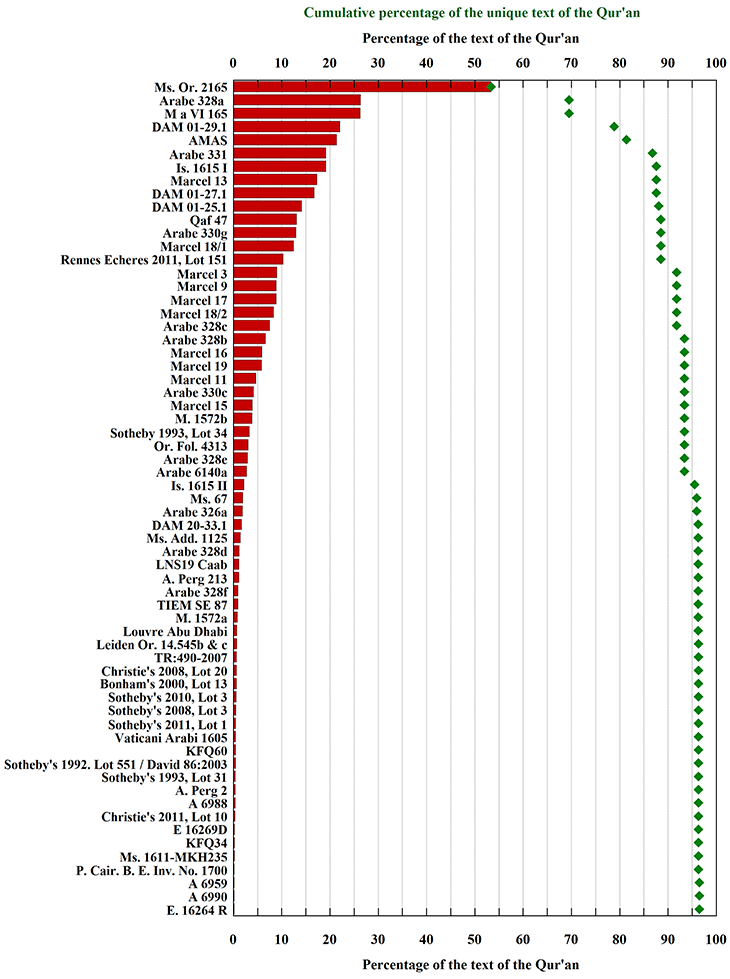The big difference between Bible and Quran is that the Bible is a collection of different texts by around 40 writers over 1500 years.
The Quran says (sura 85: 21-22) that he is a divine revelation of the heavenly Koran to Mohammed between 610-632. Mohammed recited the oral messages and so the Quran has been passed on from generation to generation.
The confusing thing is that 63 resources are needed to document 96 percent of the Quran until the year 719. The document that gets most of the Quran, include only around 53% from the Quran, although the Quran has been send to 7 cities since 656 and it is obligated to recited in the original manner. Over the century’s different Arabic versions of the Quran raised up.

Since the Bible never claims to be a transcription of a heavenly book, but shows the revelation of God trough centuries, the questions of the Bible are a different manner.
Moses appears as the first scribe. In Egypt he learns the hieroglyphic script and the alphabet script, which was used by Semitic workers around the year 2000 BC. in Central Egypt. He wrote the Torah, the five books of Moses.
People collected the words, stories, poems and sayings, but also official communications, for example from the vicinity of the royal courts. In places the Old Testament itself shows which sources belong to it or where material can be found.
From the 5th century BC. Jewish scholars put scriptures together. Which books is useful for the synagogue was a long time discussion in Judaism. With the translation of the Septuagint (LXX) a Greek translation of the Hebrew texts around the year 250 BC. a selection was made. Only after the destruction of the temple and Jerusalem by the Romans in 70 AD. Jewish scholars fixed the shape of the Hebrew Bible (Tanach).
All books of the Jewish Bible were found in Qumran, except for Esther and Haggai. Leather, papyrus and fabric remains from the cave injuries using the C14 method in the period 250 BC date to AD 70. The largest consists of 100 BC. until 30 AD.
The New Testament was written until the end of the first century. The clear structure of the Sermon on the Mount is understandable by the fact that Matthew, as a tax collector and disciple of Jesus (Levi, Luke 5:27), made notes that he later articulated. Mark wrote how Peter experienced the time with Jesus. Luke did research together with Paul. Towards the end of the first century John set up the additional encounters with Jesus, because he understood through the revelation that it would be a long period until Jesus comes again. Paul’s letters are a personal claim in the New Testament. Since he was often in prison, the only way to keep in touch was through letters.
Very quickly, the four Gospels and Paul’s letters became generally accepted foundations for church services. At the end of the 2nd century AD. the New Testament was in its own scope completed. The church father Justin wrote in the middle of the 2nd century about the New Testament writings (the Gospels) as “scripture” next to the Old Testament.
The canon of the New Testament was fixed in the form familiar to us in the years 367 by the bishop Athanasius of Alexandria in his 39th Easter letter. Other writings were not considered as useful. However, these writings were not destroyed; some of them are still in circulation today. So, there was always a discussion about them. All major churches accepted the 27 scriptures of the New Testament from the 4th century on.
About the Old Testament where more discussions. The reformers took the Jewish selection. The Catholic Church hold on the Selection of the Septuagint.